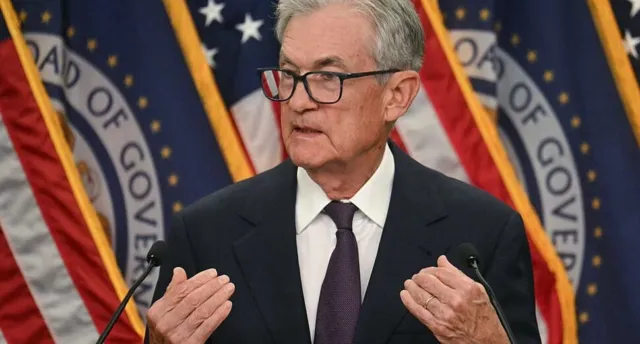
Fed Cuts Interest Rates, Hints at More Easing in 2025
The Federal Reserve has reduced interest rates by a quarter of a percentage point, signaling a significant change in its approach to economic policy. This decision reflects a growing concern about the strength of the labor market, which the Fed now views as a more pressing issue than the persistent inflation that followed the COVID-19 pandemic.
While the rate cut itself is relatively modest, it represents a major shift in the Fed’s priorities. The central bank is now signaling a greater willingness to tolerate some level of inflation in order to support employment and economic growth. This move comes at a time when the economy is still expanding, but faces uncertainties related to global trade and fiscal policy.
The decision to lower interest rates was widely anticipated by financial markets, which have been closely watching the Fed’s pronouncements for any indication of a change in policy. The Fed’s previous focus had been on combating inflation, which had surged in the wake of the pandemic due to supply chain disruptions and increased demand. However, recent economic data has suggested that inflation may be starting to cool down, while the labor market has shown signs of weakening.
Looking ahead, the Fed has indicated that it may implement further rate cuts in 2025, depending on how the economy performs. This suggests that the central bank is prepared to remain accommodative for the foreseeable future, as it seeks to navigate a complex and uncertain economic landscape. The pace and magnitude of any future rate cuts will likely depend on a number of factors, including the evolution of inflation, the strength of the labor market, and the impact of global events.
Several factors contributed to the Fed’s decision:
- Easing Inflation: Recent data suggests inflation may be moderating.
- Labor Market Concerns: Signs of weakening employment prompted action.
- Global Uncertainty: Trade tensions and geopolitical risks loom large.
The Fed’s actions are likely to have a wide-ranging impact on the economy. Lower interest rates can stimulate borrowing and investment, which can boost economic growth. They can also lead to higher asset prices, such as stocks and real estate. However, lower rates can also fuel inflation if demand outstrips supply.
The decision also comes amidst ongoing uncertainty regarding the economic policies of President Donald Trump, particularly his approach to trade and tariffs. The potential for increased trade barriers could further disrupt supply chains and put upward pressure on prices, complicating the Fed’s task of managing inflation.
The Fed’s rate cut represents a calculated gamble, as it seeks to balance the risks of inflation and recession. It remains to be seen whether this policy shift will be successful in achieving the Fed’s goals of promoting full employment and stable prices. The central bank will be closely monitoring economic data and adjusting its policies as needed in the months and years ahead.
Disclaimer: This news article is based on publicly available information and may be subject to updates.




